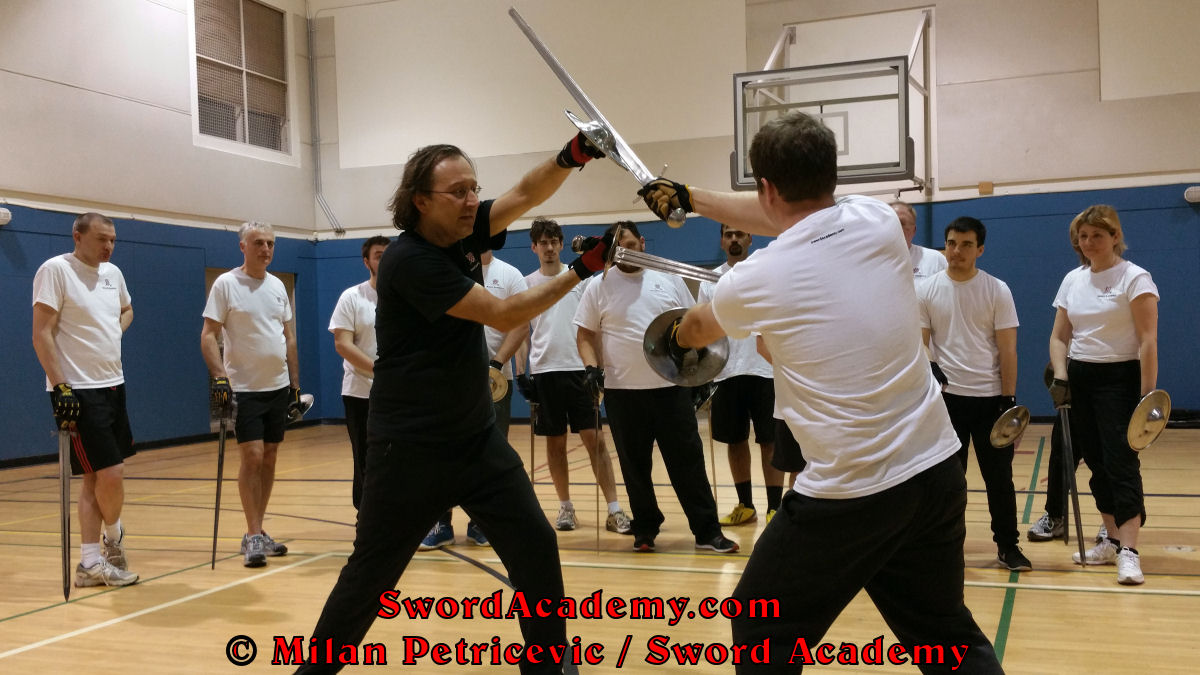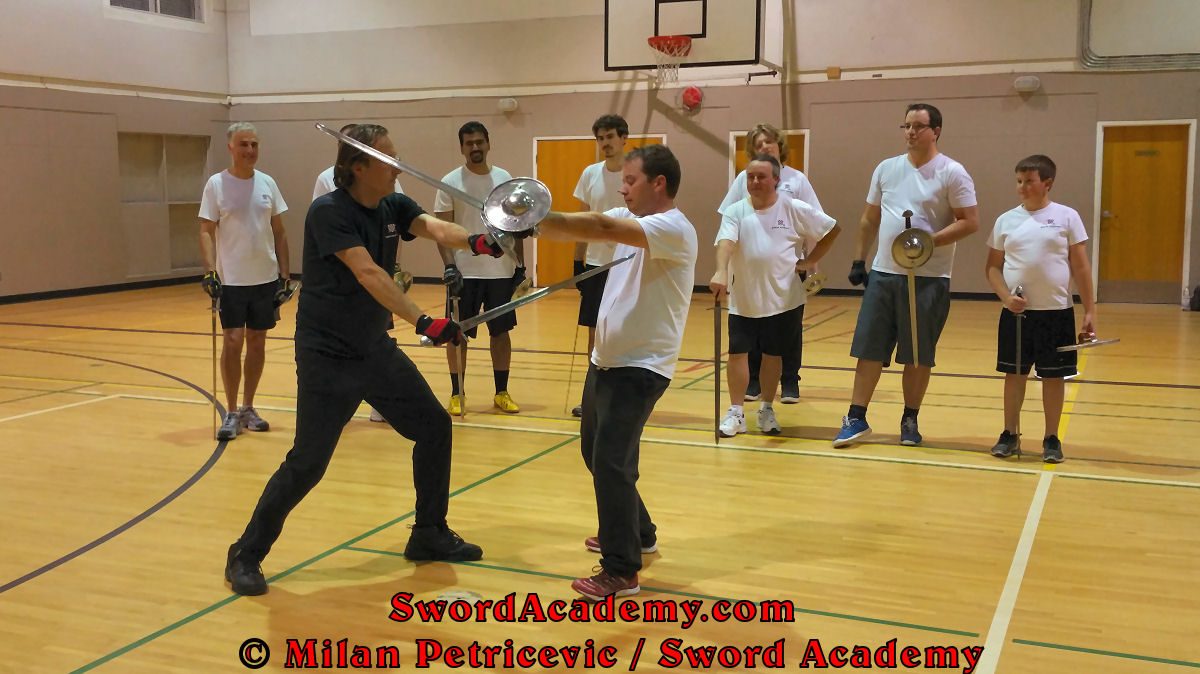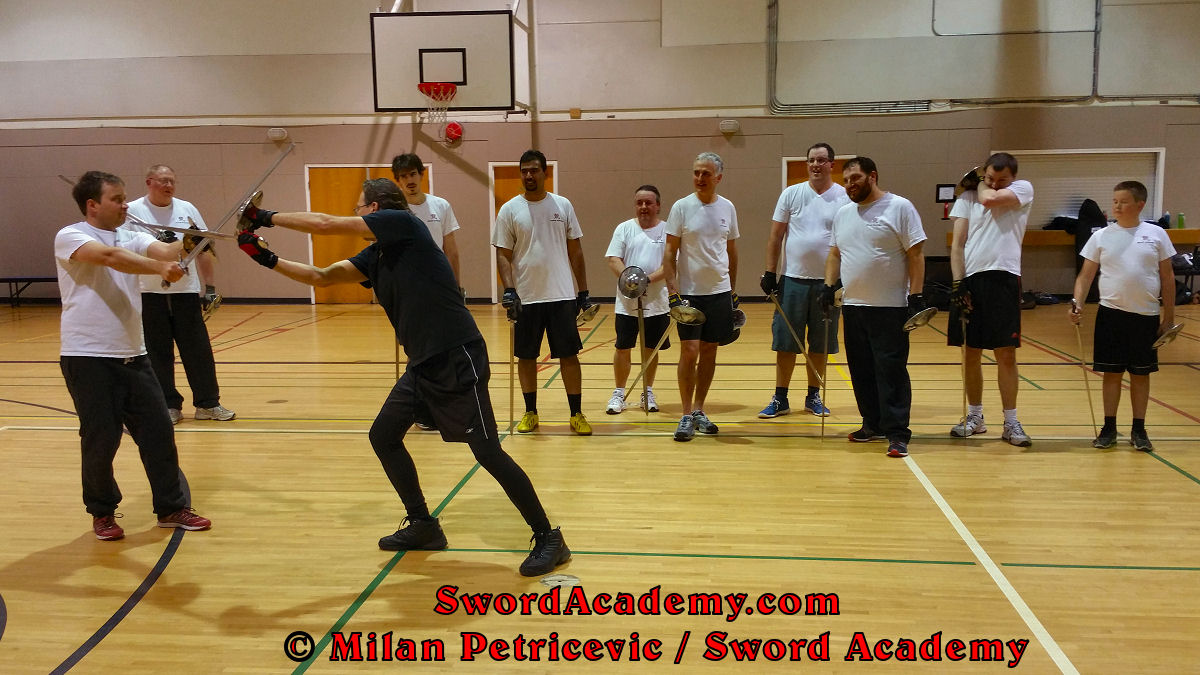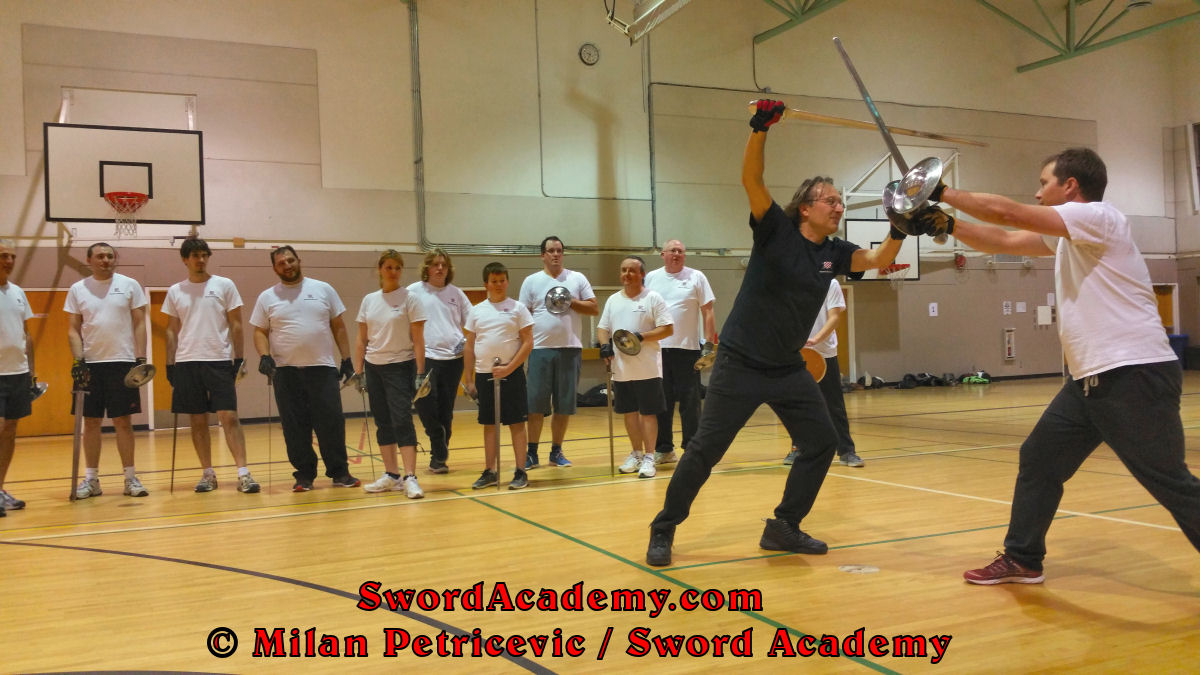Sword & Buckler

Sword and Buckler Usage and History
The buckler is a weapon that was in constant use from the earliest periods of the middle ages throughout the Renaissance and up until the prevalence of firearms rendered it obsolete. In addition, buckler combat is the oldest European weapon fighting style for which we have a surviving manual.
This section focuses on sword used together with the buckler. As there are both medieval and renaissance historical sources we study both periods. Therefore, a medieval sword or renaissance cut-and-thrust sword can be used.
The section on rapier will discuss use of rapier with the buckler.
There are two traditions of a using buckler, the earliest being represented in the 13th century German manual known as I33. In I33 combat, the sword and buckler are kept together and separation is of the two is avoided. This is the first tradition sometimes called closed combat.
This technique combined with a forward leaning stance and the I33 guards, provides a very effective style of combat that maximizes protection of the sword arm and the lower body.
The buckler combat depicted in some later medieval and renaissance historical sources makes use of simultaneous attacks and defenses that require separating the sword and buckler – representing the second tradition sometimes called open combat.
This may be due to the increased use of armor and is more likely to be found in combination with the longer swords such as used during late medieval and early renaissance periods.
When examining bucklers it is impossible not to make comparison to shields. In fact, bucklers are small shields, but what differentiates them from other small shields, such as targes and rotellas, is the ways they are used. Whereas shields are used in combination with many weapons, such as the sword, axe, mace or spear, bucklers are generally only used with single handed swords.
There are, however, some references to bucklers being used with a long sword or even more commonly a hand and a half or bastard sword. Later, during the Renaissance, a buckler would often be used to compliment a rapier or cut-and-thrust sword. The other major difference from a shield is how a buckler is held. Unlike a shield that can be strapped to the arm, it is held only with the hand giving it added mobility. This allows it to be rotated to protect the sword hand from both sides. thrust out to meet blows, or strike a blow itself.
Sword and Buckler Components and Construction
Bucklers are most often made of steel and consist of a face, boss and handle. The face was most often circular, but could be square or shaped to create one or more spikes at it’s edge. It would commonly be curved to redirect blows and the edge could be sharpened to allow cutting. The hand is usually partially inside the boss. The boss could be rounded for crushing blows or more often have a spike that allows one to catch a sword or hit an opponent.
Training Tools
The type of buckler used in Sword Academy curriculum is round steel buckler without a spike. We also have couple variants of these including different thickness of steel. Additionally, we occasionally use targa and wooden bucklers edged with metal.
Due to our philosophy (and its application to training) Sword Academy uses steel weapons exclusively in our Western Martial Arts (WMA) / Historical European Martial Arts (HEMA) curriculum as they have many benefits over wooden, synthetic or other materials.
In our curriculum, Sword Academy studies both medieval and renaissance techniques of sword and buckler combat inspired by German, Italian, and other sources.




